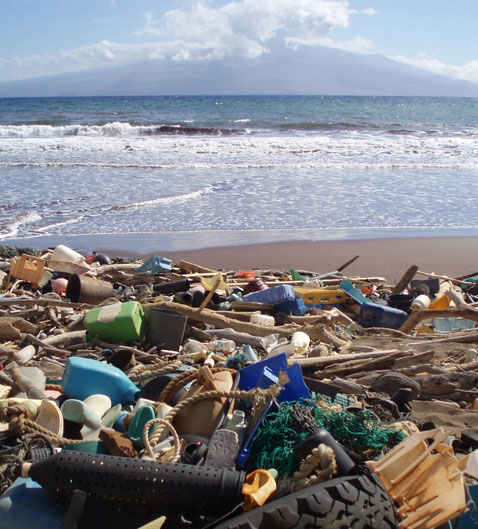Everywhere I look I see plastic. From the lid on my morning coffee to the flossers that I wedge between my kids' teeth before bed, it's as ubiquitous as it is convenient.
Sure, it's durable and disposable. But those qualities also make plastic increasingly deadly for ocean species around the world.
Sea turtles eat discarded balloons thinking they're jellyfish, seals get entangled in packing bands and die, seabirds ingest plastic and starve to death because they think their stomachs are full.
Hundreds of thousands of ocean animals die each year because of plastic pollution. The depressing fact is, we've produced more plastic in the past decade than ever in the history of Earth - and much of it winds up in our oceans. Some 90 percent of the floating debris in the seawater is plastic. 
Today, I wanted to find out how much plastic I was throwing away during a day - and how much I might be contributing to the massive garbage in the Pacific Ocean that's twice the size of Texas and swirling with 6 billion pounds of plastics.
By midday, most of my plastic fit into a small pile. Writing at a curbside café, I add to my pile a coffee lid that was just kicked into the street and was about to drop into the storm drain. Phew, I may have just saved an albatross from certain death.
What is the wildlife toll of plastic pollution? At least 267 species of marine animals -- including turtles, fish, seabirds and mammals -- have been found entangled in plastic or with plastic in their stomachs. In a new study, 95 percent of dead fulmars, a seabird that feeds exclusively at sea, had plastic in their guts. The study also showed a dramatic increase in plastic pollution in our ocean ecosystems in the past 40 years. The world's endangered sea turtles are highly susceptible to getting tangled in plastic as are many marine mammals, including critically endangered Hawaiian monk seals whose primary habitat borders the Great Pacific Garbage Patch.
Plastic pollution tends to accumulate in fishing grounds, coastal waters and beaches that are important wildlife habitat.
The more I learn about this crisis the more one thing becomes clear: we've got to stop polluting these areas with derelict fishing gear, beverage bottles, caps, shopping bags and every other scrap of plastic that, while convenient for us, is a daily death sentence for sea life. Plastic simply does not belong in the ocean.
This week the Center for Biological Diversity petitioned the Environmental Protection Agency for a zero plastic pollution limit. By setting a zero plastic pollution limit for our oceans and beaches, the EPA will have tools to better monitor, clean-up, and prevent plastic pollution. Indeed, that storm drain should never deposit a plastic item into our oceans.
At the end of the day, I had collected two coffee lids, a sandwich bag, a produce bag, two shopping bags, a twist tie, a bread clip, a shampoo bottle, toothbrush packaging, take out container, a straw, a tofu package, and two dental flossers. My goal tomorrow is to use zero single-use plastic.
There's bigger work to do too. I hope you'll join me in asking EPA to end plastic pollution in our oceans: it's for the birds.
Photo: NOAA